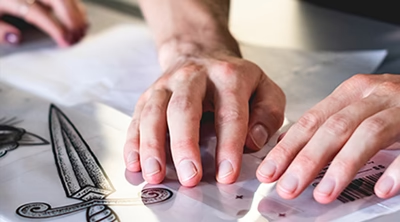How to Choose the Right Screen Printing Equipment in the USA
Beginning or expanding a screen-printing business is thrilling, but it also has a great responsibility—picking the right equipment. The equipment and tools you invest in today will have a direct influence on the quality of your prints, the productivity of your production, and ultimately, the success of your shop. With all the options available in the USA, ranging from affordable starter packages to advanced automatic presses, it can be daunting to determine what's ideal for your requirements.
This guide takes you through the most critical things to consider when choosing screen printing machinery in the USA so that you make informed and intelligent decisions.
1. Know Your Business Objectives
Step back before buying anything and ask yourself:
-
Am I setting up a small side business or a full-time store?
-
How many prints do I anticipate doing per week?
-
Am I focusing on custom t-shirts, posters, or specialty products?
If you're just getting started, a manual press and some screens are all you'll probably need. But if you're planning for high-volume output and fast turnaround times, you'll need to consider automatic presses and bigger dryers. The equipment that's correct for you is less about what's "trendy" and more about what fits your vision.
2. Learn About the Core Equipment
Screen printing consists of some important pieces of equipment with their respective roles. Familiarizing yourself with them will help you make a strategic investment.
Screen Printing Press
This is the center of your business. In the USA, you'll get manual presses, semi-automatic, and automatic presses.
-
Manual presses are cheap and perfect for newbies. They need muscle power but enable you to learn the art by hand.
-
Automatic presses are quicker, precise, and best suited for high-volume shops, but more expensive.
Exposure Unit
This is where you expose your design onto a screen. A good exposure unit provides crisp detail and stencils of the correct accuracy. In the USA market, there are budget-friendly tabletop exposure models or advanced vacuum exposure systems to choose from.
Conveyor Dryer or Flash Dryer
Curing the ink is important for a durable print. The best option is a conveyor dryer, particularly if you are going to grow your business. A flash dryer can be used in smaller operations, but it takes more time to cure larger orders.
Washout Booth
Once printed, screens must be reclaimed or washed out. A washout booth helps with cleanup and prolongs the life of your screens.
Additional Tools
Don't forget little but vital tools such as squeegees, scoop coaters, screen racks, and cleaning chemicals. These seem insignificant, but they have a direct influence on your efficiency and print quality.
3. Manual vs. Automatic: Which Is Right for You?
The biggest choice in the USA market is to be manual or automatic.
-
Manual presses are best for small shops, hobbyists, and businesses printing short runs. They’re less expensive, portable, and easier to maintain.
-
Automatic presses are designed for production-level businesses. They speed up printing, reduce labor costs, and ensure consistent results.
Think about your order volume. If you’re printing fewer than 200 shirts a week, a manual press might be perfect. If you’re printing thousands, an automatic press is worth the investment.
4. USA-Made or Imported?
Another factor is whether to purchase USA-made or imported equipment.
-
USA-made equipment has a reputation for being long-lasting, having excellent warranties, and having great customer support. Most American businesses, such as those in Texas, California, and Illinois, construct presses and dryers that will endure decades.
-
Imported equipment tends to be less expensive initially, but it can have less support in the long run and fewer replacement parts.
If you want dependability and customer service, spending money on American-built screen printing equipment is typically the better choice.
5. New vs. Used Equipment
Not all companies can make the jump to brand-new equipment immediately, and that's fine. America possesses a healthy second-hand equipment market for screen printing.
-
New equipment provides warranties, the newest technology, and good peace of mind.
-
Used equipment can be a savings of thousands of dollars, but be sure to thoroughly examine it before purchase. Always check bearings, electronics, and moving parts for condition.
-
Refurbished equipment is available from many reputable USA distributors, offering a compromise between cost savings and dependability.
6. Budget Sensibly
You may want to purchase the largest, most expensive press, but wise budgeting is essential. Include not only the cost of the equipment, but:
-
Shipping and installation
-
Training for your staff
-
Consumables such as screens, ink, and emulsion
-
Maintenance and spares
Plan your finances in phases. Begin with the basics, then improve as your shop expands.
7. Look for Support and Training
One advantage of buying equipment in the USA is the customer support. Many companies provide training, maintenance guides, and even on-site installation. Look for brands and distributors that have responsive customer service—because when something breaks down mid-job, you’ll want quick help.
8. Plan for Growth
Your gear should be functional to your needs today, as well as leave some freedom to grow. For instance, you may begin with a 4-color manual press but select a model that can accommodate additional print heads in the future. Likewise, getting an adequate conveyor dryer up front can set your shop up for larger volume production.
Final Thoughts
Selecting the appropriate screen printing equipment USA does not have to be daunting. Begin by determining your objectives, then construct a configuration that suits your budget, production requirements, and expansion strategy. Regardless of whether you spend on a low-cost manual press or an expensive automated system, the most important thing is to select equipment that enables you to produce high-quality prints every time.
Keep in mind: your tools are the backbone of your shop. When you wisely invest, you're not merely purchasing machines—you're creating a shop to be proud of for years to come.


.webp)

Comments
Post a Comment